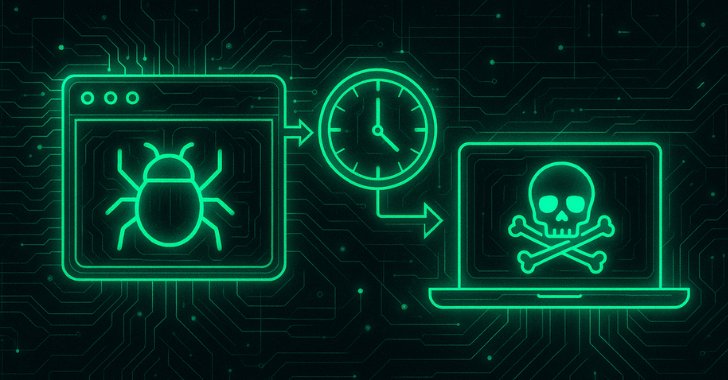Summary Points
-
Rapid Session Hijacking: Cybercriminals exploit stealer malware to take over enterprise sessions within hours, often using infected endpoints to hijack high-value session tokens and access vital business applications without detection.
-
Market Dynamics: Stolen session tokens, particularly from Microsoft and Google, are sold on dark web marketplaces at prices ranging from $5 for consumer accounts to over $1,200 for enterprise-level access, facilitating a booming underground market.
-
Increasing Threat Scale: Millions of sessions are compromised weekly, with 88% of breaches linked to stolen credentials, underscoring the need for organizations to recognize that personal malware infections are a significant entry point for enterprise threats.
- Defensive Imperatives: Organizations must adapt by revoking all active sessions after an endpoint compromise, monitoring for unusual network activity, and employing advanced detection techniques to combat the evolving session hijacking landscape.
Underlying Problem
In May 2025, a significant shift in the cybersecurity landscape was reported by Eric Clay, Chief Marketing Officer at Flare. His research unveiled the alarming rise of stealer malware, which has evolved from merely pilfering passwords to hijacking live online sessions, posing an unprecedented threat primarily to enterprises rather than individual users. Through meticulous analysis of over 20 million compromised logs, it became evident that cybercriminals are increasingly leveraging infected employee devices to obtain sensitive data—specifically session tokens for major platforms like Microsoft and Google—enabling them to orchestrate full infiltrations into corporate networks in less than 24 hours.
The findings highlight a sophisticated underground market where millions of these tokens are trafficked weekly, with prices ranging drastically based on their value, underscoring the urgency for organizations to adapt their defenses. Traditional cybersecurity measures, focused on password integrity, are rendered inadequate as attackers exploit user-level access, allowing them to impersonate employees and inflict substantial damage. Clay’s piece calls for immediate action, including revoking active sessions post-infection and enhancing monitoring protocols, to confront this rapidly evolving threat landscape.
Risk Summary
The emergence of stealer malware that hijacks live sessions presents a severe risk not only to individual users but to entire organizations, potentially destabilizing the interconnected landscape of modern enterprise security. As malicious actors rapidly exploit compromised employee endpoints—often within hours—businesses become vulnerable to catastrophic breaches, with highly sensitive data exfiltrated and critical systems infiltrated. The fact that attackers can bypass multi-factor authentication through session token theft amplifies the threat significantly, placing confidential communications, intellectual property, and customer information at imminent risk. This ripple effect can lead to substantial financial losses, reputational damage, and regulatory repercussions, creating a precarious environment for businesses that rely on digital trust and seamless cooperation. The widespread availability of stolen session tokens in underground markets reflects a systemic vulnerability that, unless addressed, threatens to engulf even organizations adopting stringent cybersecurity protocols, underscoring the necessity for a robust, proactive defense strategy against evolving cyber threats.
Possible Action Plan
In the intricate web of cybersecurity, the urgency of timely remediation cannot be overstated, especially when analyzing incidents such as "A 24-Hour Timeline of a Modern Stealer Campaign." This framework elucidates the critical nature of swift action in protecting sensitive information and maintaining overall system integrity.
Mitigation Steps
-
Identify Threats
Conduct thorough assessments to pinpoint vulnerabilities and the specific nature of the threat, ensuring no facet of the attack goes unnoticed. -
Isolate Affected Systems
Segregate compromised systems from the network immediately to halt the proliferation of malicious activities. -
Patch Vulnerabilities
Implement necessary updates or patches to close any gaps that facilitated the attack, reinforcing system defenses against future threats. -
Enhance Monitoring
Utilize advanced threat detection tools to fortify real-time monitoring, thereby increasing the chances of early detection of any anomalous activities. - Educate Users
Train personnel on recognizing suspicious behaviors, fostering a security-conscious atmosphere that can preemptively mitigate future intrusions.
NIST CSF Guidance
The NIST Cybersecurity Framework (CSF) underscores the significance of incident response and recovery processes. For comprehensive directives on mitigating such risks, refer to NIST Special Publication (SP) 800-61, which offers extensive insights into incident handling.
In summary, a prompt and well-coordinated response is paramount. Timeliness in remediation not only curbs potential damages but also fortifies an organization’s resilience against future incursions.
Advance Your Cyber Knowledge
Explore career growth and education via Careers & Learning, or dive into Compliance essentials.
Learn more about global cybersecurity standards through the NIST Cybersecurity Framework.
Disclaimer: The information provided may not always be accurate or up to date. Please do your own research, as the cybersecurity landscape evolves rapidly. Intended for secondary references purposes only.
Cyberattacks-V1

